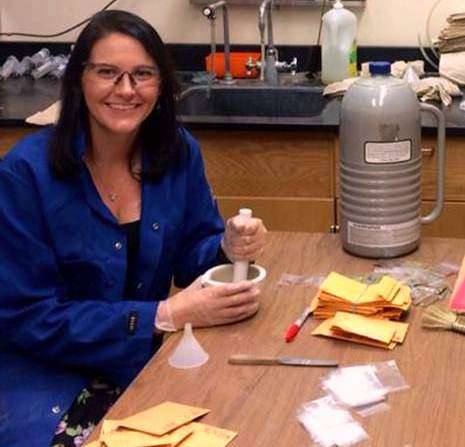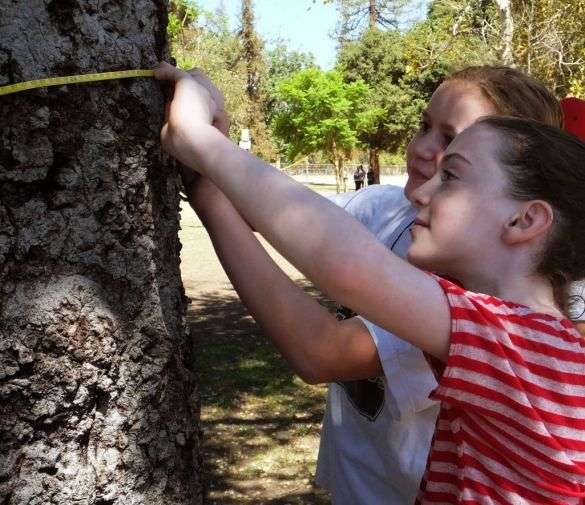Researchers analyze the benefits of urban trees

What have your trees done for you lately? According to UC Riverside Professor of Botany and Plant Science Darrel Jenerette, trees cool our homes, neighborhoods, and improve our health. Now he is exploring the hypothesis that the cooling provided by your trees may also help save water, an important virtue during California's unprecedented drought.
Jenerette and colleagues are relying on citizen scientists to collect the bulk of the data, sampling trees from Malibu to Palm Springs. Since last August, over 300 people have taken measurements on more than 1,300 trees, across 25 days of sampling.
"One of the most rewarding aspects of our Southern California urban tree project has been bringing diverse students and community groups together to assist in the research processes," said postdoctoral researcher Sheri Shiflett, who has trained and assisted multiple community groups with field research. "The commitment and excitement of our community partners and citizen scientists has been exceptional."
The race to save water in home landscapes has sometimes come at the cost of living green vegetation in cities. But those green trees combat the "urban heat island" effect, where metropolitan areas are measurably hotter than rural or natural landscapes. Jenerette's latest work, currently in review, shows how this cooling can have important impacts to human health. Satellite temperature measurements were compared to surveys that asked households to report their incidence of heat-related illnesses. Increased vegetation cover was correlated with fewer heat-related illnesses.
"In the last decade, there has been a demographic transition, where now more than 50 percent of people live in cities. Thus, it is critically important to understand how the urban environment affects people," says Jenerette. "I want to highlight the importance of urban ecology in addition to other characteristics of the urban environment that impact human health, such as pollution, congestion, or access to ecosystem services."

Vegetative cover can also tell you how old a neighborhood is and the income level of inhabitants. More cover occurs in wealthier neighborhoods, known as the 'luxury effect'. According to Jenerette's recent research (in the journal Landscape and Urban Planning) in southern California, increased number of tree species, or diversity, occurs in older neighborhoods, known as the 'legacy effect'.
In Southern California, tree diversity is especially high because of our warm, temperate climate. As compared to long-term urban ecology studies in cities like Minneapolis, where cold winters limit the species of trees that can grow there, roughly 90 percent of Southern Californian urban trees come from outside of California (according to a recent paper in Frontiers in Ecology and Evolution by Jenerette and colleagues). Some species even originate from tropical environments, requiring substantial irrigation. Understanding how urban tree prevalence and diversity impacts water use is Professor Jenerette's current focus.
Together with non-profit partners, such as EarthWatch and the Los Angeles Museum of Natural History, Jenerette, Shiflett, and Ph.D. student Peter Ibsen are working to determine how much water trees use, how much they cool their immediate environment, and which species provide the most cooling benefits for the least amount of water use. They plan to sample over 30 species, comparing the benefits of three types of trees: historic ornamentals, drought-tolerant trees of the future, and native California species.
Jenerette, Shiflett, and Ibsen hope to be able to tell people what trees will be most robust to a changing climate. Trees that can survive in a warmer, drier Southern California can help municipalities prepare for expected increases in temperature. "I want to help urban managers choose and cultivate species most appropriate for different urban regions to minimize urban heat vulnerability now and in response to future climate change," says Jenerette.
Provided by University of California - Riverside

















